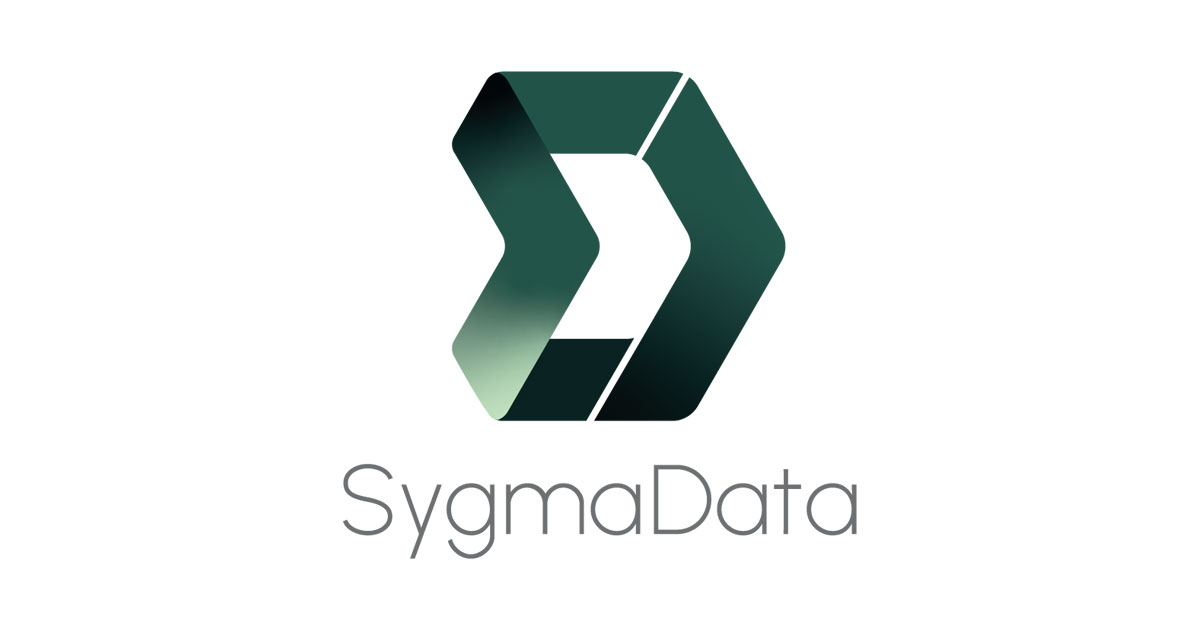Download the PDF document here: Data Fabric as the Backbone of Grid Modernisation and Smart Grids
Data Fabric as the Backbone of Grid Modernisation and Smart Grids
Discover how data fabrics drive grid modernization by integrating real-time analytics, automation, and distributed energy in smart, resilient energy systems.
Table of Contents
Role of Data Fabric in Grid Modernisation. 6
Enhancing Data Accessibility. 6
Supporting Real-Time Decision Making. 6
Integrating Distributed Energy Resources. 6
Enabling Advanced Analytics and Automation. 6
Denmark’s Advanced Energy Policies. 8
Woodside Energy’s Data Fabric Implementation. 8
Endeavour Energy’s SAP Data Fabric Deployment 9
Challenges and Limitations. 10
Regulatory and Compliance Barriers. 11
Evolving Energy Landscapes. 12
summary
Data Fabric as the Backbone of Grid Modernisation and Smart Grids refers to the integration of data management technologies that support the transformation of traditional electrical grids into advanced smart grids. This evolution marks a significant shift in energy infrastructure, enabling two-way communication between utilities and consumers while accommodating diverse energy sources, including renewable technologies. Notably, the concept of data fabric acts as a vital connective layer that facilitates seamless data access and management, essential for enhancing operational efficiency, reliability, and decision-making in modern energy systems.[1][2].
The integration of data fabric in grid modernization is increasingly recognized for its role in addressing the complexities brought about by distributed energy resources (DERs) and the growing volume of data generated by smart technologies. By enabling real-time data accessibility and integration across various operational technology (OT) systems, data fabric not only enhances grid management but also supports advanced analytics and automation processes. This capability is crucial for maintaining grid stability and responsiveness in an era characterized by rapid technological advancements and shifting energy demands.[3][4].
Prominent examples of data fabric implementation can be seen in various case studies, such as Germany’s Energiewende and Denmark’s advanced energy policies, both of which illustrate successful strategies in smart grid deployment. Companies like Woodside Energy and GE Vernova are leveraging data fabric to improve operational efficiency and resilience within their energy systems. However, the widespread adoption of these technologies is not without challenges, including technical interoperability issues, economic constraints, and regulatory barriers that can hinder progress and innovation in grid modernization efforts.[5][6][7][8].
The future of energy management is poised for transformation as data fabric architectures continue to evolve alongside technological innovations such as the Internet of Energy (IoE) and AI-driven systems. These developments hold the potential to reshape energy consumption patterns, enhance sustainability, and create new economic opportunities within the green economy. Nevertheless, addressing the societal implications of smart grid technologies and ensuring equitable access to energy resources will be crucial as the energy landscape continues to change.[9][10].
Background
The evolution of the electrical grid has been marked by significant advancements, transitioning from traditional centralized structures to modern smart grids. Early electricity grids were primarily designed for the straightforward delivery of power from large generation plants to consumers, but they encountered challenges in efficiency, reliability, and scalability as energy demands grew[1]. As a response to these limitations, the concept of the smart grid emerged, characterized by its use of digital technology to facilitate two-way communication between utilities and consumers[2].
Smart grids incorporate various advanced technologies, including artificial intelligence (AI), which enhances operational efficiency by enabling real-time data analysis, predictive maintenance, and automated fault detection[1][3]. This integration allows for improved energy management and resilience, especially as the grid accommodates a more diverse mix of energy sources, including renewable energy[3]. By enabling distributed generation—where sources such as solar panels and wind turbines can feed energy back into the grid—smart grids introduce complexities that necessitate sophisticated planning and management techniques[2].
Moreover, the modern power grid is structured around three key components: generation, transmission, and distribution. It harnesses a variety of energy sources, including nuclear, hydroelectric, fossil fuels, and increasingly, renewables. High-voltage transmission lines convey electricity over vast distances to substations, which then distribute it at lower voltages to end-users[1]. This transformation reflects the industry’s shift towards smarter systems that not only deliver power but also actively manage its flow and usage across an interconnected network.
To further enhance situational awareness and reduce latency in data processing, initiatives like data fabric are being explored as crucial backbones for grid modernization. This technology facilitates seamless data integration across various operational technology (OT) systems, minimizing delays in data availability for decision-making by plant operators[4]. The ongoing integration of AI with emerging technologies such as Digital Twin models and the Internet of Energy promises to redefine grid architectures, supporting dynamic energy distribution and proactive risk management in response to the increasing demands on modern energy systems[1][3].
Data Fabric Concept
Data fabric, particularly in the context of grid modernization and smart grids, represents a unified and comprehensive approach to data management that enables organizations to aggregate, integrate, manage, and analyze data seamlessly, regardless of its source, location, or format[5][6]. It can be understood as a network of interconnected data storage and processing systems that facilitate easy data access, sharing, and management within an organization, ensuring seamless data flow across various business processes[11][12].
Defining Data Fabric
Data fabric can be viewed as a data-driven ecosystem providing a centralized and unified view of data across disparate systems, applications, and storage platforms. This approach acts as a connective layer, enabling seamless data access, integration, and orchestration across different applications and systems[5][13]. By leveraging data connectors, organizations can bridge the gaps between various data storage locations (e.g., databases, applications, and sensors) and a central location, allowing for a holistic analysis of data[13].
Evolution and Components
The evolution of data fabric involves enhancing data governance, which ensures data quality, security, and compliance with regulatory requirements. Key components of data fabric architecture include data management processes, data connectors, and data governance mechanisms, all of which work together to provide a comprehensive solution for organizations dealing with complex data challenges[13][6].
Business Benefits
Implementing a data fabric within the framework of grid modernization can yield significant business benefits. These include improved data accessibility, enhanced decision-making capabilities, streamlined operations, and increased innovation[5][11]. A centralized data management system reduces the technical debt associated with disparate data sources and allows organizations to harness real-time data insights for better operational efficiency[12].
Role of Data Fabric in Grid Modernisation
Data Fabric plays a crucial role in the modernisation of energy grids by enabling the efficient management of vast and disparate data sources. As the complexity of the grid increases, driven by the integration of distributed energy resources (DERs), real-time data access and management become essential for effective grid operations[14][15].
Enhancing Data Accessibility
The grid today encompasses a multitude of data points from various sources including smart meters, sensors, and renewable energy systems, leading to an exponential growth in data volume[16]. A grid data fabric serves as a foundational technology that bridges these disparate and siloed data sources, allowing grid operators to access and unify information across the entire grid ecosystem[17][14]. This unified data view enhances decision-making capabilities, enabling operators to orchestrate the grid in real-time effectively.
Supporting Real-Time Decision Making
At the heart of grid modernisation is the necessity for accurate and timely data regarding the physical state of the grid[16]. The advanced capabilities of data fabric technologies, such as federation and virtualization, provide grid operators with the ability to manage real-time data streams from both operational technology (OT) and information technology (IT) applications. This integrated approach helps operators discover, govern, and utilize vast amounts of distributed data, which is essential for maintaining grid reliability and efficiency in the face of growing operational demands[14][16].
Integrating Distributed Energy Resources
Data Fabric also facilitates the seamless integration of DERs, such as solar panels and battery storage, into the grid[18][19]. As energy generation increasingly shifts towards localized sources, the need for sophisticated data management systems becomes critical. Data fabric solutions support the visualization, control, and simulation of these resources, enabling more effective management of power flow and grid stability[20][18].
Enabling Advanced Analytics and Automation
The implementation of data fabric technologies is complemented by the use of smart grid analytics, which leverage the centralized data view to drive intelligent automation and decision-making processes[20][9]. These advanced analytics capabilities are essential for applications such as intelligent inertia management and distributed energy resource management systems (DERMS), allowing operators to adapt to rapidly changing grid conditions and optimize both energy consumption and generation[16][9].
Case Studies
Germany’s Energiewende
Germany’s Energiewende, or energy transition, serves as a prominent case study in smart grid implementation. This policy initiative focuses on integrating renewable energy sources into the national grid while enhancing grid efficiency and reliability. Key elements include substantial investments in smart grid technologies and the promotion of decentralized energy production. The outcomes of this policy demonstrate how strategic investments and regulatory support can foster innovation and sustainability in energy systems[15].
Denmark’s Advanced Energy Policies
Denmark’s advanced energy policies provide another valuable example of successful smart grid deployment. The country has implemented policies that encourage the use of wind energy and promote energy efficiency through innovative grid technologies. By analyzing the integration of renewable energy and the challenges faced, Denmark’s approach illustrates the importance of continuous adaptation in policy development to maintain competitiveness and resilience within the energy sector[15].
Woodside Energy’s Data Fabric Implementation
Woodside Energy exemplifies the application of a data fabric in the energy sector. The company has established a data fabric to streamline data collection and transmission from various assets into a digital twin known as Fuse. This initiative has enabled better situational awareness and predictive maintenance by simplifying data pathways and improving real-time access to operational metrics, thereby enhancing decision-making and operational efficiency[4].
Sygma Data’s Data Fabric
Sygma Data’s introduction of the GridOS Data Fabric marks a significant advancement in grid orchestration capabilities. This data fabric allows utilities to access and virtualize decentralized data from multiple sources, supporting the integration of renewable energy and enhancing the resilience of the electric grid. Collaborations with partners in Switzerland further amplify the potential of this grid-specific data fabric to address the challenges posed by electrification and extreme weather events[14].
Endeavour Energy’s SAP Data Fabric Deployment
Endeavour Energy’s deployment of SAP Datasphere and SAP Analytics Cloud demonstrates the practical benefits of implementing a data fabric in smart grid management. This initiative has enhanced analytical capabilities and improved data accessibility across the organization, leading to more informed decision-making processes regarding energy efficiency and resource management[21]. The success of this deployment underscores the importance of data integration in fostering a smarter energy grid.
Challenges and Limitations
The integration of data fabric technologies in grid modernization and smart grids presents several challenges and limitations that need to be addressed for effective implementation.
Technical Challenges
One of the primary technical challenges involves ensuring interoperability among diverse and complex systems, which include hardware, software, and communication networks. The reliance on proprietary technologies from different vendors can lead to compatibility issues, resulting in stranded investments and limited integration of new technologies into the grid[7]. Additionally, managing the vast amounts of data generated by smart grid sensors raises concerns about data processing capabilities and cybersecurity vulnerabilities[8]. Achieving seamless communication and data sharing across various platforms is essential to overcome these hurdles[22].
Economic Challenges
Economic challenges also play a significant role in the slow adoption of smart grid technologies. High upfront costs associated with smart grid infrastructure pose a barrier, and justifying these investments requires a clear demonstration of their long-term benefits[8]. Utilities, regulators, and consumers need to understand not only the direct cost savings from improved grid efficiency but also the indirect advantages, such as enhanced resilience to disruptions and reduced environmental impact[1]. The complexity of quantifying these benefits can impede decision-making processes and delay necessary investments.
Data Management Issues
Data management issues further complicate the deployment of data fabric technologies. The integration of data from various sources often reveals inconsistencies in data quality and availability, which can undermine the effectiveness of machine learning algorithms and predictive analytics[22][5]. Fragmented data management systems and a lack of standardization in evaluation protocols contribute to these challenges, making it difficult to achieve reliable outcomes from machine learning-enhanced renewable energy systems[22]. Moreover, concerns regarding model interpretability and the ethical implications of data usage—such as bias and privacy risks—are critical considerations that demand interdisciplinary approaches and robust governance frameworks[22][23].
Regulatory and Compliance Barriers
The regulatory landscape poses additional obstacles to the integration of smart grid technologies. The complex web of federal, state, and local regulations can create uncertainty and conflict, hindering the implementation of smart grid initiatives[7]. Streamlining regulatory requirements and establishing standard protocols for data transmission across systems can help mitigate these barriers and foster a more conducive environment for innovation[24]. Furthermore, compliance with industry regulations is crucial for energy operators, and effective data fabric solutions can play a vital role in maintaining regulatory standards[25].
Future Trends
Evolving Energy Landscapes
The transition towards smarter energy grids is set to reshape the dynamics of global energy consumption, driven by the integration of data fabric architectures and advanced technologies. The emergence of AI-driven systems within smart grids promises to enhance energy efficiency, reduce carbon emissions, and democratize energy access through increased participation from prosumers.[9][10]. This transformative potential is underscored by the necessity for evolving policies that support the integration of renewable energy sources and facilitate a more sustainable energy future.[1].
Technological Innovations
As the electric grid evolves, the adoption of innovative technologies will play a pivotal role in addressing the challenges posed by renewable energy integration. Key advancements include the Internet of Energy (IoE), decentralized energy systems, and next-generation energy storage solutions, all of which are anticipated to foster greater resilience and adaptability in energy management systems.[1][18]. Moreover, AI applications are expected to streamline processes such as vehicle-to-grid (V2G) integration, enhance cybersecurity, and enable dynamic energy trading, ensuring that smart grids can operate effectively in real-time environments.[1].
Societal Implications
The implications of these advancements extend beyond technology to societal dimensions. As smart grid technologies become increasingly autonomous, understanding cultural acceptance and digital literacy will be crucial for their widespread adoption.[9]. Additionally, the integration of advanced data fabric architectures will support the analytical needs of various stakeholders, enhancing their ability to make informed decisions that align with sustainability goals.[26][23]. The collective commitment to ethical governance and innovation will be vital in reimagining energy as a universally accessible common good, fostering a sustainable and equitable society.[9].
Economic Opportunities
The economic landscape surrounding smart grids is also poised for significant transformation. By enabling new market designs that compensate distributed generators, smart grids can stimulate investments in local energy initiatives such as rooftop solar and community solar projects.[18]. The integration of real-time data will facilitate more accurate forecasting of energy needs, enabling utilities to operate more efficiently and potentially reduce costs for consumers.[18]. As the energy sector embraces these changes, it will create a fertile ground for new economic opportunities within the green economy, reinforcing the critical role of smart grids in future energy strategies.[9][1].
References
[1]: Transforming the electrical grid: the role of AI in advancing smart …
[2]: What Are the Challenges with Smart Grids?
[3]: Blog – Challenges in Smart Grids – Montel
[4]: Woodside Energy builds an industrial data fabric – iTnews
[5]: Data Fabric Use Cases: Understanding Its Suitability & Applicability …
[6]: What is Data Fabric? – Tibco
[7]: Data Fabric – What, Why & How? – LinkedIn
[8]: Gartner’s Post – LinkedIn
[9]: What is a data fabric? | SAP
[10]: GE Vernova unveils grid data management software to unlock a …
[11]: What Are Key Smart Grid Policy Changes?
[12]: Data is the backbone of grid modernization – Renewable Energy World
[13]: Exploring Grid Data Fabric Use Cases | GEVernova
[14]: Sygma Data’s Data Fabric
[15]: What Are the Potential Implications of Data Bias on Equitable …
[16]: What is The Role of Data Analytics in a Smart Grid? – GE Vernova
[17]: AI-Driven Optimization of Smart Grid Data ’ Scenario
[18]: Endeavour Energy: Shaping a modern data fabric architecture … – SAP
[19]: What Are Smart Grid Policy Implementation Challenges?
[20]: What Are the Challenges of Implementing Smart Grids? ’ Question
[21]: Machine learning applications in energy systems: current trends …
[22]: Data Fabric: Techniques, Architecture & Best Practices – GigaSpaces
[23]: Smart Manufacturing with Industrial Data Fabric – AWS
[24]: White paper – The usage of data fabrics for energy operators
[25]: Smart grid (SG) properties and challenges: an overview
[26]: Data Fabric: Unraveling the Future of Integrated Data Management



